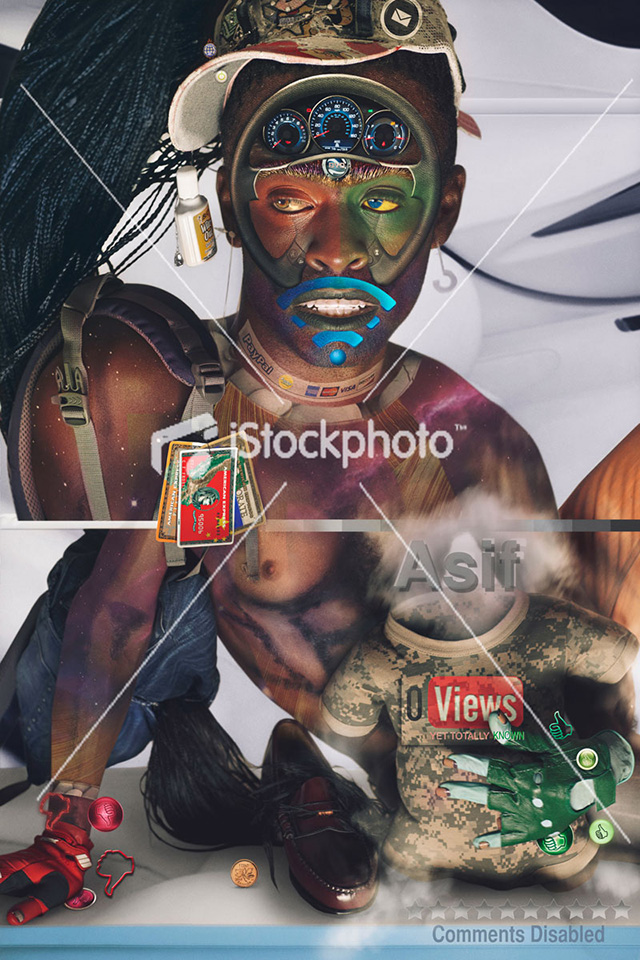
Ryan Trecartin for W Magazine
Currently making the Internet rounds is artist Ryan Trecartin’s IMG MGMT-like essay for DIS Magazine — a detailed set of instructions and images that went into the creation of his fashion spread at W Magazine. Perhaps not surprisingly, the inside look at Trecartin’s process has received far more facebook views and tweets than the spread itself.
The piece reminds me of James Elkin’s “How To Look at a Mondrian“, published this October in The Huffington Post, which similarly brought in a boatload of tweets and facebook shares. According to Elkin’s, his article aims to reveal “how we see the world”, through examining the process of reproducing paint application. The text is purely mechanical in nature, like that of Trecartin, with the unwritten assumption that a reader would come to understand Mondrain paintings better by reading about how to reproduce them.
While Elkins does a pretty good job of explaining why the paint application of Mondrian is skillful — it’s careful and achieves luminosity — the trouble with his essay is that not many other conclusions are drawn. Elkins tells us only that Mondrian’s paintings are “painterly” and meant to be seen from a distance. The first conclusion is a stretch, the second we already knew.
There’s probably more to take home from Trecartin’s instruction set, if for no other reason than it comes from the artist himself. No reflection occurs within the text, just images and objectives. It’s basically an answer key to his work. A few examples:
BODY MAKE UP: I want Ashland’s Body to very extreme contour makeup work. So that his muscles look Customized…(his skin and muscles are on the same level of hyper maintenance as his hair).
In post remove the Ring and Finger on Both Hands. To look like Choice Single Culture. &fuck the album.
Each brace will be attached to a 3D Icon/App Object. The brace holds this object/button in suspension between teeth, never touching any material.
Theres a Tradition in New Orleans where people pin money to the shoulder of a birthday. I want to Pin Ashland with 3 credit Card substitutions.
To read the full piece click here.


{ 5 comments }
This article has been making the rounds for about two months now… Trecartin is good at drenching his imagery in symbols, you should see http://www.youtube.com/watch?v=UM7SrDJPH38 as well (fits into his current aesthetic.) The spread is an illustrated view of the present, like each person has all of these interactions with brands and media everyday, and Trecartin is literally attaching them all over their bodies to show how complex it all is. He’s addressing cultural signifiers, which is pretty gutsy.
As for the breakdown, pretty tl;dr imho for content supposed to be zero attention-span media saturation. Interested to know whether Trecartin released it intentionally or Dis just went for it since the people/brands are connected. Seems to me like the difference in audience (Dis readers are all artsy, disaffected Gen-Y net surfers as far as I can tell) matters quite a bit. Reminds me of how manga/anime companies release extreme limited edition collectors’ edition dvds/toys, priced for their 1000 hardcore fans that keep the brand promoted.
As problematic as it might be, the Elkins piece seemed to me like a good intro for people who don’t know a damn thing about how to look at a painting, because at the very least it emphasizes how paint and technique can mean a lot. Trecartin’s instructions, on the other hand, are more like a game than instructions in retrospective; spot the bluetooth makeup and Blingee text memes. You win if you ‘get it.’
You’re right – it is a little long, though if it’s just a set of studio instructions so I guess that’s why. The question of whether he released it intentionally is a good one.
I see the problem you cite with Trecartin’s instruction set, but it bothered me less. I didn’t mention it in the piece because I thought the comparison had a few problems, but it reminded me of Michael Kimmelman’s breakdown of Matthew Barney’s work. He described the work as intentionally vague, but then went into the work in great detail:
Not quite the Trecartin treasure hunt, but still — it’s useful to know, and nobody’s going to catch all that without a key.
The key is helpful like some of Barry X Ball’s titles: http://bit.ly/fFlnqC
durrrr
wry
Comments on this entry are closed.